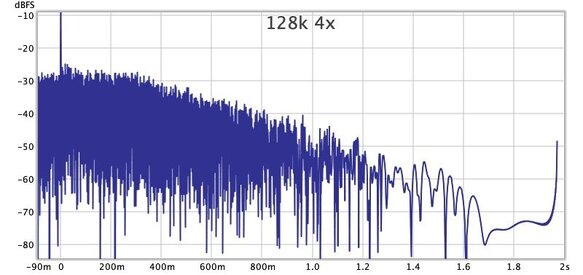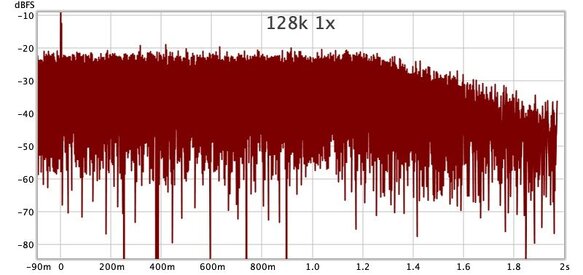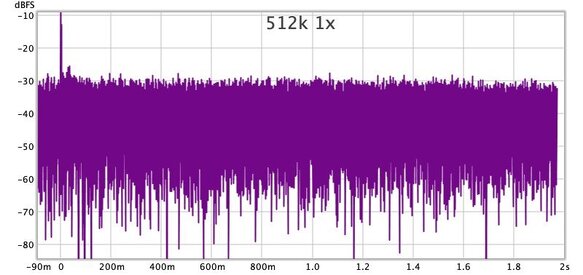jochen2000
Registered
More
- Front Speakers
- Genelec 8331
- Subwoofers
- Genelec 7350
I have done some experiments today to see how I can improve the signal to noise ratio. I played some background (pink) noise from another speaker during the measurements to have a stable noise. Unfortunately some things are not like I expect them:
- the impulse response has a fade out when measuring with 128k length. After 1.2s the signal starts to fade out by 20dB till the end of the impulse at 2.0s. 256k just slightly shows this, and from 512k on it's not visible.
- when using repetitions this fade out gets even worse. 128k is not really usable for me as the fade out starts already after 300ms (when using 2 repetitions) and being off by 20dB at 1s. If there is any intention to decrease the length of the measurement/IR for high frequencies, then I would expect it to be AFTER merging the repetitions.
- using repetitions doesn't show any benefit for 1M and longer. No attenuation of background noise as I would have hoped and expected. Aren't the repetitions made for this purpose?
For comparison I used the same laptop, with the same Dante virtual sound card and the same other hardware devices with Smaart V8. And from there all combinations of measurement lengths and repetitions show consistent results. No fade out, and always 3dB attenuation by every doubling of either length or repetitions like theory predicts.
I checked all settings in REW and also tried to deactivate the IR truncation after measurement, and both 44.1kHz and 48kHz sampling rates. No change at all whatever I do. It seems to be in the measurement algorithm, far before any window is applied for the analysis.
Any idea how I can improve this issue? My work around for now is to always use 512k or 1M even if I only needed 1.5s of impulse response. But still the use of repetitions doesn't offer any benefit regarding signal-to-noise-ratio.
Btw I'm using a Macbook and REW 5.20 Beta 29 with Dante Virtual Sound Card.
Cheers,
Jochen
- the impulse response has a fade out when measuring with 128k length. After 1.2s the signal starts to fade out by 20dB till the end of the impulse at 2.0s. 256k just slightly shows this, and from 512k on it's not visible.
- when using repetitions this fade out gets even worse. 128k is not really usable for me as the fade out starts already after 300ms (when using 2 repetitions) and being off by 20dB at 1s. If there is any intention to decrease the length of the measurement/IR for high frequencies, then I would expect it to be AFTER merging the repetitions.
- using repetitions doesn't show any benefit for 1M and longer. No attenuation of background noise as I would have hoped and expected. Aren't the repetitions made for this purpose?
For comparison I used the same laptop, with the same Dante virtual sound card and the same other hardware devices with Smaart V8. And from there all combinations of measurement lengths and repetitions show consistent results. No fade out, and always 3dB attenuation by every doubling of either length or repetitions like theory predicts.
I checked all settings in REW and also tried to deactivate the IR truncation after measurement, and both 44.1kHz and 48kHz sampling rates. No change at all whatever I do. It seems to be in the measurement algorithm, far before any window is applied for the analysis.
Any idea how I can improve this issue? My work around for now is to always use 512k or 1M even if I only needed 1.5s of impulse response. But still the use of repetitions doesn't offer any benefit regarding signal-to-noise-ratio.
Btw I'm using a Macbook and REW 5.20 Beta 29 with Dante Virtual Sound Card.
Cheers,
Jochen

















